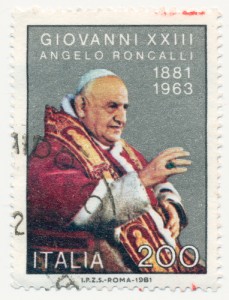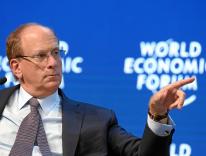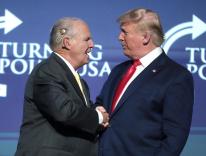Ever since it was urged by Pope John XXIII that the Second Vatican Council would attempt to meet the needs of the day by more fully explaining the validity of her doctrinethan by condemning and that the Councils exercise of its teaching office would be pastoral in nature, the question of Vatican IIs doctrinal authority has been debated. At the first session, what it meant to teach pastorally was warmly debated. Some argued that it had always been a councils role to articulate the Churchs faith in clear and universally comprehensible dogmatic language, with the task of expressing it in pastorally accessible language left to bishops and priests in their several circumstances. Others argued that to take up the Popes challenge, the Council would have always to keep in mind the audience which it is addressing, much as a preacher has to have both scriptural text and congregation in his mindthis is what it would mean for the Council to teach pastorally. This group emphatically denied that being pastoral meant not being doctrinal; only the doctrines needed to be expressed pastorally. A third group pointed out that it is impossible to speak pastorally to all the potential audiences in the Churchwhat would be pastorally intelligible in Belgium, say, might not be pastorally appropriate in, say, Bangladesh. In the end, I think it can be said, the majority of bishops chose the second of these positions, but with a tendency, often unconscious, to take modern man as the intended audience, with that figure defined largely by reference to the societies and cultures of western Europe and North America. The question of the doctrinal authority of the conciliar teachings was raised several times in the course of the next three sessions. The Doctrinal Commission addressed it twice in 1964. A first response was not terribly helpful: As is self-evident, a conciliar text must always be interpreted according to the general rules known by all. Eventually this clarification was issued: In view of conciliar practice and the pastoral purpose of the present Council, this sacred Synod defines matters of faith or morals as binding on the Church only when the Synod openly declares so. Other matters which the sacred Synod proposes as the doctrine of the supreme teaching authority of the Church each and every member of the faithful is obliged to accept and embrace according to the mind of the sacred Synod itself, which becomes known either from the subject matter or from the language employed, according to the norms of theological interpretation. The result was a series of documents that depart from the style and language of previous ecumenical councils. Anathemas are not used to exclude heretical positions. No formal dogmas are presented. The language is more biblical, patristic, liturgical, spiritual than scholastic or systematic. The rhetoric, as John OMalley has well described, aims at persuasion rather than at either condemnation or formal argument. That the Council was an instance of a pastoral presentation of the faith rather than of a dogmatic statement of it has in recent decades been the grounds on which the conciliar teachings have been called into question. This view continues to set being pastoral in opposition to being dogmatic, and while this may be true in terms of dogma technically defined, it ignores the view of the popes and of the majority of the conciliar fathers that being doctrinal and being pastoral were by no means mutually exclusive. What weight is to be given to the conciliar documents and teachings was part of the agenda in the conversations between some Vatican theologians and theologians from Archbishop Lefebvres Society of St. Pius X, and I would be surprised if were not addressed in the Doctrinal Preamble that the Vatican asked the Society to accept before its canonical situation could be regularized. In a recent interview, Bishop Fellay, current head of the SSPX, indicated that his group could not endorse the Doctrinal Preamble without some clarifications, and among them, it seems, the acceptance of the Councils teachings would be a vital issue. Fellay repeated the mantra: The Second Vatican Council was intended to be pastoral; it did not define any dogma. It did not add to the articles of faith: I believe in religious liberty, in ecumenism, in collegiality. It is perhaps significant, then, that LOsservatore Romano this week published an article on the adherence due to the teachings of Vatican II and that the article was very quickly made available in several languages on the Vatican newspapers website. Its author is a member of Opus Dei and is said to have been part of the discussions between the Vatican and the Lefebvrists. He makes some of the same points Ive made above. There are three levels of self-commitment in the conciliar texts: 1) things already part of the Churchs doctrinal and dogmatic heritage, confirmed or taken for granted at the Council; 2) other teachings that are authoritatively but not definitively; and 3) more circumstantial elements. He also speaks of innovations of a doctrinal nature with regard, e.g., to the sacramental nature of the episcopate, episcopal collegiality, and religious freedom. The evaluation of these innovations would raise the question of the hermeneutics of the Council, and here we find the obligatory reference to Pope Benedicts distinction between an interpretation that focuses on discontinuities and one that sees the Council as an instance of renewal within continuity. This distinction is once again taken too sharply, more sharply than the Pope himself made it, but the disjunction has become something of a magic wand by which serious questions about what the Council did and said can be made to vanish.http://www.osservatoreromano.va/portal/dt?JSPTabContainer.setSelected=J… Ever since it was urged by Pope John XXIII that the Second Vatican Council would attempt to meet the needs of the day by more fully explaining the validity of her doctrine rather than by condemning and that the Councils exercise of its teaching office would be pastoral in nature, the question of Vatican IIs doctrinal authority has been debated. At the first session, what it meant to teach pastorally was warmly debated. Some argued that it had always been a councils role to articulate the Churchs faith in clear and universally comprehensible dogmatic language, with the task of expressing it in pastorally accessible language left to bishops and priests in their several circumstances. Others argued that to take up the Popes challenge, the Council would have always to keep in mind the audience which it is addressing, much as a preacher has to have both scriptural text and congregation in his mindthis is what it would mean for the Council to teach pastorally. This group emphatically denied that being pastoral meant not being doctrinal; only the doctrines needed to be expressed pastorally. A third group pointed out that it is impossible to speak pastorally to all the potential audiences in the Churchwhat would be pastorally intelligible in Belgium, say, might not be pastorally appropriate in, say, Bangladesh. In the end, I think it can be said, the majority of bishops chose the second of these positions, but with a tendency, often unconscious, to take modern man as the intended audience, with that figure defined largely by reference to the societies and cultures of western Europe and North America. The question of the doctrinal authority of the conciliar teachings was raised several times in the course of the next three sessions. The Doctrinal Commission addressed it twice in 1964. A first response was not terribly helpful: As is self-evident, a conciliar text must always be interpreted according to the general rules known by all. Eventually this clarification was issued:
Ever since it was urged by Pope John XXIII that the Second Vatican Council would attempt to meet the needs of the day by more fully explaining the validity of her doctrine rather than by condemning and that the Councils exercise of its teaching office would be pastoral in nature, the question of Vatican IIs doctrinal authority has been debated. At the first session, what it meant to teach pastorally was warmly debated. Some argued that it had always been a councils role to articulate the Churchs faith in clear and universally comprehensible dogmatic language, with the task of expressing it in pastorally accessible language left to bishops and priests in their several circumstances. Others argued that to take up the Popes challenge, the Council would have always to keep in mind the audience which it is addressing, much as a preacher has to have both scriptural text and congregation in his mindthis is what it would mean for the Council to teach pastorally. This group emphatically denied that being pastoral meant not being doctrinal; only the doctrines needed to be expressed pastorally. A third group pointed out that it is impossible to speak pastorally to all the potential audiences in the Churchwhat would be pastorally intelligible in Belgium, say, might not be pastorally appropriate in, say, Bangladesh. In the end, I think it can be said, the majority of bishops chose the second of these positions, but with a tendency, often unconscious, to take modern man as the intended audience, with that figure defined largely by reference to the societies and cultures of western Europe and North America. The question of the doctrinal authority of the conciliar teachings was raised several times in the course of the next three sessions. The Doctrinal Commission addressed it twice in 1964. A first response was not terribly helpful: As is self-evident, a conciliar text must always be interpreted according to the general rules known by all. Eventually this clarification was issued:
In view of conciliar practice and the pastoral purpose of the present Council, this sacred Synod defines matters of faith or morals as binding on the Church only when the Synod openly declares so. Other matters which the sacred Synod proposes as the doctrine of the supreme teaching authority of the Church each and every member of the faithful is obliged to accept and embrace according to the mind of the sacred Synod itself, which becomes known either from the subject matter or from the language employed, according to the norms of theological interpretation.
The result of the Council was a series of documents that depart from the style and language of previous ecumenical councils. Anathemas are not used to exclude heretical positions. No formal dogmas are promulgated. The language is more biblical, patristic, liturgical, spiritual than scholastic or systematic. The rhetoric, as John OMalley has well described, aims at persuasion rather than at either condemnation or formal argument. That the Council was an instance of a pastoral presentation of the faith rather than of a dogmatic statement of it has in recent decades been the grounds on which the conciliar teachings have been called into question. This view continues to set being pastoral in opposition to being dogmatic, and while this may be true in terms of dogma technically defined, it ignores the view of the popes and of the majority of the conciliar fathers that being doctrinal and being pastoral were by no means mutually exclusive. What weight is to be given to the conciliar documents and teachings was part of the agenda in the conversations between some Vatican theologians and theologians from Archbishop Lefebvres Society of St. Pius X, and I would be surprised if were not addressed in the Doctrinal Preamble that the Vatican asked the Society to accept before its canonical situation could be regularized. In a recent interview, Bishop Fellay, current head of the SSPX, indicated that his group could not endorse the Doctrinal Preamble without some clarifications, and among them, it seems, the acceptance of the Councils teachings would be a vital issue. Fellay repeated the mantra: The Second Vatican Council was intended to be pastoral; it did not define any dogma. It did not add to the articles of faith: I believe in religious liberty, in ecumenism, in collegiality.
It is perhaps significant, then, that LOsservatore Romano this week published an article on the adherence due to the teachings of Vatican II and that the article was very quickly made available in several languages on the Vatican newspapers website. Its author is a member of Opus Dei and is said to have been part of the discussions between the Vatican and the Lefebvrists. He makes some of the same points Ive made above. There are three levels of self-commitment in the conciliar texts: 1) things already part of the Churchs doctrinal and dogmatic heritage, confirmed or taken for granted at the Council; 2) other teachings that are authoritative but not definitive; and 3) more circumstantial elements. He also speaks of innovations of a doctrinal nature with regard, e.g., to the sacramental nature of the episcopate, episcopal collegiality, and religious freedom. The evaluation of these innovations would raise the question of the hermeneutics of the Council, and here we find the obligatory reference to Pope Benedicts distinction between an interpretation that focuses on discontinuities and one that sees the Council as an instance of renewal within continuity. This distinction is once again taken too sharply, more sharply than the Pope himself made it, but the disjunction has become something of a magic wand by which serious questions about what the Council did and said can be made to vanish.
Photo:Solodov Alexey / Shutterstock.com
Please email comments to [email protected] and join the conversation on our Facebook page.
Previous Story
Holiday Books, no religion please
Next Story
Advent Earnestness


